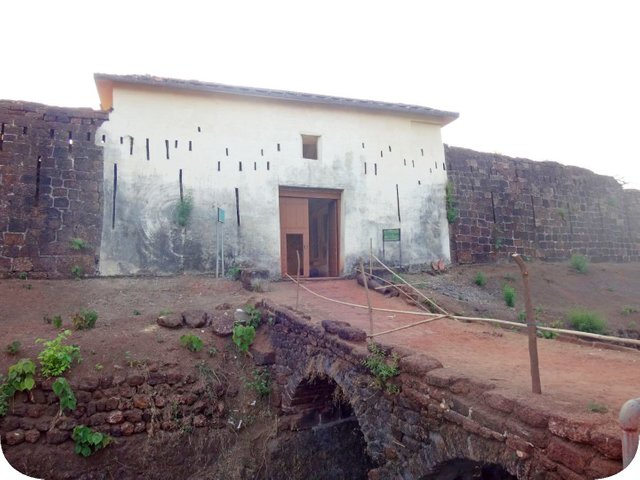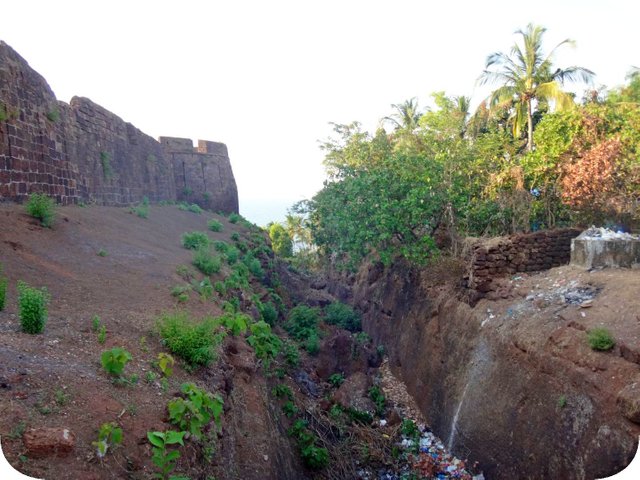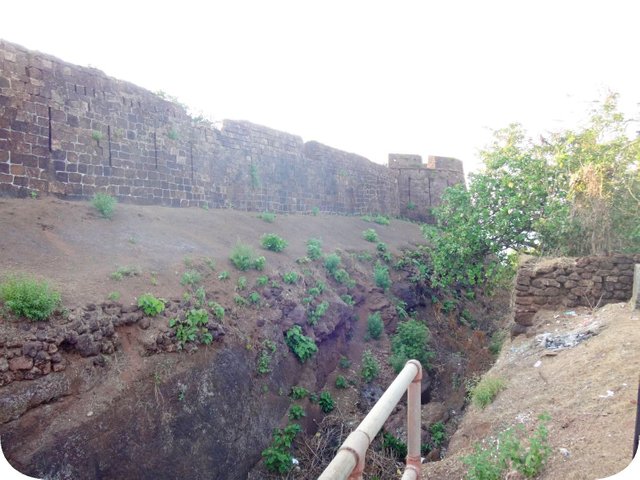Excursion to the Fort Cabo de Rama. part 9\Ausflug zu Fort Cabo de Rama. Teil 9
Cabo de Rama Fort.
I continue our tour of the best beaches in South Goa. We have already visited Palolem and Agonda, and did not see the Cola beach, because not every jeep will pass along that road, and our old minibus could not boast of off-road qualities. And now we are going to meet the sunset in the fort of Cabo de Rama. It's funny that the name of the fort clearly glows with the name of Rama. “Cabo de Rama” is translated as Cape Rama, respectively, the fortress standing on this cape was called Cabo de Rama Fort. The fort seems to be Portuguese, but its name has clear Indian roots. We need to understand the situation! Fort Cabo de Rama is located near the beach of Agonda, there is only 18 kilometers to go.
On the local winding roads, the journey takes about 30 minutes. By the way, this is the largest fort in Goa. Its area is 179,600 square meters. Cabo de Rama Fort was built in 1679 by Shivaji Maharaj. A Maharaja is none other than a king. Shivaji was the king of the Maratha Empire.
A very respected person, even a national hero in India. The Maharaja successfully fought with the Mughal Empire, and by 1674 he was crowned in the capital of the Maratha state, Raigada, and created the Maratha state on the site of the current state of Maharashtra (translated as “Great Country”) and adjacent territories. The state capital is Mumbai (Bombay). Shivaji aki understood the strategic importance of sea routes, and therefore he conquered and built forts by the sea.
By the way, even after the death of Shivaji in 1680, the Maratha Empire continued the war with the Mughal Empire. It was a progressive ruler.
The fort repeatedly changed owners, it was captured by Muslims and the British. But word for word, and in 1753 the fort passed into the hands of the Portuguese, then it was modernized and rebuilt. The fort was armed with 21 cannons, there were numerous barracks for soldiers, there was a church and warehouses. A serious fortification for those times.
Gradually, the military significance of the fort was lost, in the period from 1932 to 1955 it was used as a prison, and then it became unnecessary and the Cabo de Rama fort was abandoned.
Now the main entrance to the Cabo de Rama fort and the walls around the entrance have been somehow restored for tourists, and the rest lies in ruins. Only rusty cannon barrels remind that once there was a military building here.
..to be continued…
●
Festung Cabo de Rama.
Ich setze unsere Tour zu den besten Stränden in Süd-Goa fort. Wir haben Palolem und Agonda bereits besucht und den Cola-Strand nicht gesehen, da nicht jeder Jeep diese Straße entlangfahren wird und unser alter Kleinbus nicht mit Offroad-Qualitäten auftrumpfen konnte. Und jetzt treffen wir den Sonnenuntergang in der Festung von Cabo de Rama. Es ist lustig, dass der Name des Forts deutlich mit dem Namen Rama leuchtet. „Cabo de Rama“ wird als Kap Rama übersetzt, bzw. die auf diesem Kap stehende Festung hieß Cabo de Rama Fort. Das Fort scheint portugiesisch zu sein, aber sein Name hat eindeutig indische Wurzeln. Wir müssen die Situation verstehen! Fort Cabo de Rama liegt in der Nähe des Strandes von Agonda, es sind nur noch 18 Kilometer zu gehen. Auf den kurvigen Ortsstraßen dauert die Fahrt etwa 30 Minuten. Übrigens ist dies die größte Festung in Goa. Seine Fläche beträgt 179.600 Quadratmeter. Cabo de Rama Fort wurde 1679 von Shivaji Maharaj erbaut. Ein Maharadscha ist nichts anderes als ein König. Shivaji war der König des Maratha-Reiches. Eine sehr angesehene Person, in Indien sogar ein Nationalheld. Der Maharaja kämpfte erfolgreich mit dem Mogulreich und wurde 1674 in der Hauptstadt des Maratha-Staates, Raigada, gekrönt und gründete den Maratha-Staat an der Stelle des heutigen Bundesstaates Maharashtra (übersetzt als „Großes Land“) und angrenzender Gebiete . Die Landeshauptstadt ist Mumbai (Bombay). Shivaji aki verstand die strategische Bedeutung von Seewegen und deshalb eroberte und baute er Festungen am Meer. Übrigens setzte das Maratha-Reich auch nach dem Tod von Shivaji im Jahr 1680 den Krieg mit dem Mogulreich fort. Es war ein progressiver Herrscher.
Das Fort wechselte wiederholt den Besitzer, es wurde von Muslimen und Briten erobert. Aber Wort für Wort, und 1753 ging das Fort in die Hände der Portugiesen über, dann wurde es modernisiert und umgebaut. Die Festung war mit 21 Kanonen bewaffnet, es gab zahlreiche Kasernen für Soldaten, es gab eine Kirche und Lagerhäuser. Eine ernsthafte Befestigung für diese Zeit. Allmählich ging die militärische Bedeutung des Forts verloren, in der Zeit von 1932 bis 1955 wurde es als Gefängnis genutzt, dann wurde es überflüssig und das Fort Cabo de Rama wurde aufgegeben.
Jetzt sind der Haupteingang der Festung Cabo de Rama und die Mauern um den Eingang irgendwie für Touristen restauriert worden, und der Rest liegt in Trümmern. Nur rostige Kanonenrohre erinnern daran, dass hier einst ein Militärgebäude stand.
..Fortsetzung folgt…




You've got a free upvote from witness fuli.
Peace & Love!